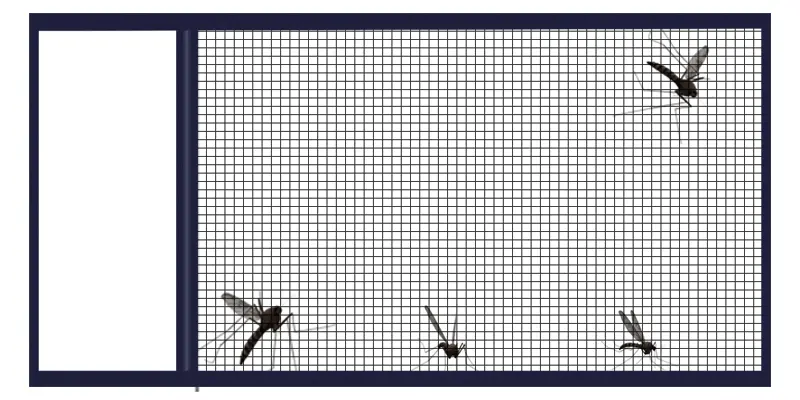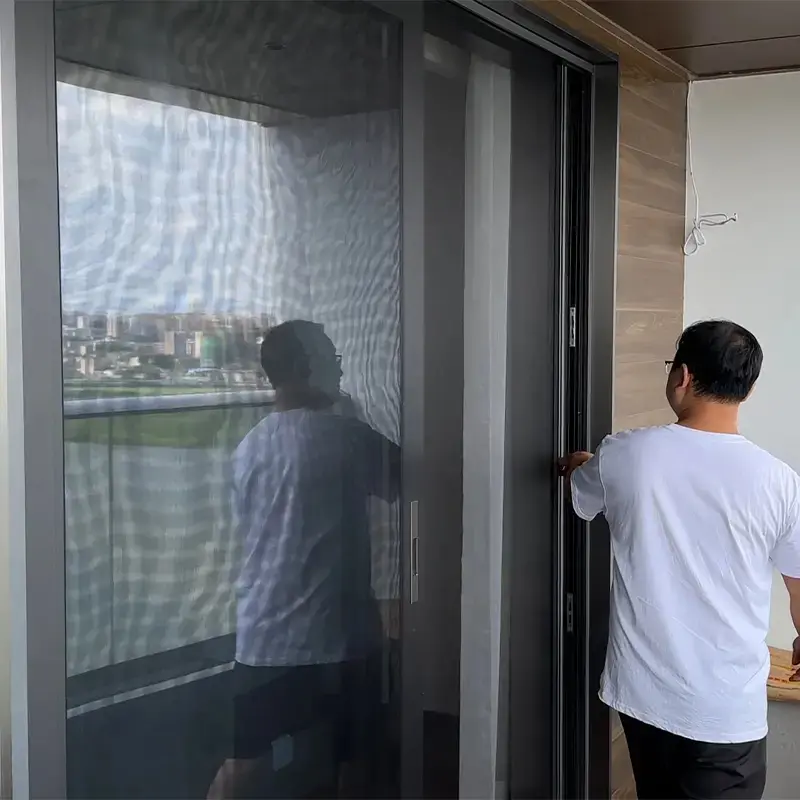Whether you are remodeling and putting in new screen doors or repairing your current doors, there are so many screen mesh options on the market today — it can be overwhelming trying to determine the best material for your project.
Where do I start?
The good news is, by asking that question, you’ve already started. Here’s a handy checklist to assist you in your decision-making process
- How important is maintaining aesthetics and your view of the outside?
- What safety concerns do you have?
- What size mesh will you need?
- Consider your geographical location
- Common species of insects in your area
- What type, quality and color of mesh material will you need?
Aesthetics and View
In settings where screen doors are installed, much consideration is given not only to keeping insects out, but also to creating, enhancing and/or preserving the view to the outside. In most cases, especially in peoples’ homes, choosing a screen mesh that is as invisible as possible is the first priority.
Then there is the ventilation factor. In locations where conventional swinging screen doors are an aesthetic challenge, such as a main entry, Retractable Screen Doors (RSDs) are a serious option for homeowners to consider. The rapid growth in popularity of RSDs is directly related to the increase in energy-efficient homes where natural ventilation is at a premium. Often, the main entry door is frequently the only source of fresh air on a particular side of a home; so the only way to get good cross ventilation is to open the front door. RSDs are an affordable, practical and high curb appeal alternative to swinging screen doors.
Safety concerns
Given that screen doors, by design, are intended to keep bugs from getting inside, they can only perform that function if the screen material is 100% intact. Most of us don’t give any thought to the safety aspect of our screen doors until there’s a specific need to. That said, screen door accidents are an extremely common occurrence. People and pets walk into and through screen doors all the time. If you need proof, just Google “screen door accidents” or “people walking through screen doors” to see for yourself.
Mesh size
Screen mesh size is determined by the number of openings per square inch of mesh. For example, a number 4 mesh will have 4 openings per square inch; a number 16 mesh will have 16 openings per square inch. For screen doors, standard 18 x 16 mesh with a .011 diameter (wire thickness) is typically recommended to keep out common insects.
Material considerations
Vinyl-coated fiberglass mesh is the preferred industry standard for screen doors (and windows). It’s easy to install, durable and affordable. Your color options are charcoal and gray. Another material option is aluminum wire. Apples to apples, aluminum wire is slightly more durable than fiberglass mesh and is available in charcoal, black and silver. Otherwise, there’s nothing substantially different between the two. In fact, vinyl-coated fiberglass mesh outsells aluminum 3 to 1, as it’s about half the cost. There are additional specialty material options including PP Screen and Pet Screen. If interested, you can use The Google to research more about them.





